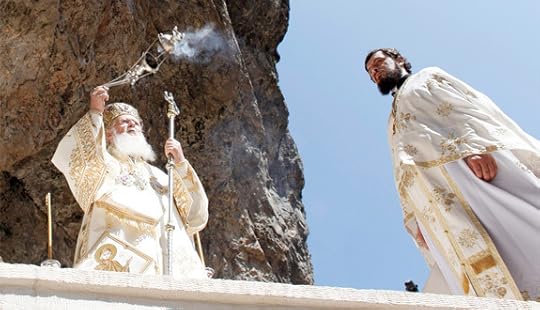The Fragile Promise of the Pan-Orthodox Council

Ecumenical Patriarch Bartholomew of Constantinople celebrates an Orthodox liturgy for the feast of the Dormition of Mary at the Panagia Soumela Monastery near Trabzon, Turkey in August 2010. The Patriarch will preside over the Orthodox council to be held in Constantinople in 2016. (CNS photo/Umit Bektas, Reuters)
The Fragile Promise of the Pan-Orthodox Council | Fr. Cyril Hovorun | CWR
The announced 2016 council of Eastern Orthodox Churches is historical, but expectations should be modest
An Assembly (Synaxis) of the Primates of the local Orthodox Churches, meeting March 6-9, 2014 in Istanbul, has agreed to convene a Pan-Orthodox council. A “Communiqué of the Primates of the Orthodox Churches” released on March 9th stated that “the Holy and Great Synod of the Orthodox Church … will be convened and presided by the Ecumenical Patriarch in Constantinople in 2016.” This decision brings to the homestretch a long process of preparation that goes back as far as the 1920s, had an active phase in 1960s and 1970s, and then was rather quiet until very recently.
Historical context
The last Pan-Orthodox council of this scale was convened in Constantinople well over a thousand years ago, in 879-880, when Photius was reinstalled to the Patriarchal throne. That council dealt mostly with the issues of inter-Church relations and had wide representation of the Eastern Christian Churches, with over 380 bishops in attendance. Some Orthodox believe that the IV Council of Constantinople (its other name) was the eighth and last ecumenical council.
After Byzantium lost most of its territories, the councils of the same scale became impossible. Nevertheless, the Eastern Church continued exercising its synodality. Many Eastern bishops and even Patriarchs were unable or did not want to stay with their flocks on the occupied territories. They either preferred,or had no choice but to spend most of their time in safe Constantinople. The old institution of endemousa synod—that is, a gathering of all bishops who, by chance, found themselves in the capital—became a major instrument of the Church’s synodality. Not only the hierarchs under the jurisdiction of Constantinople, but also bishops and even Primates of other Patriarchates, participated in such councils, which managed ecclesial matters related not only to the Church of Constantinople but to the entire Eastern Church.
After the collapse of the Ottoman empire, the Orthodox Churches began discussing the possibility of convening a Pan-Orthodox council.
Carl E. Olson's Blog
- Carl E. Olson's profile
- 20 followers



